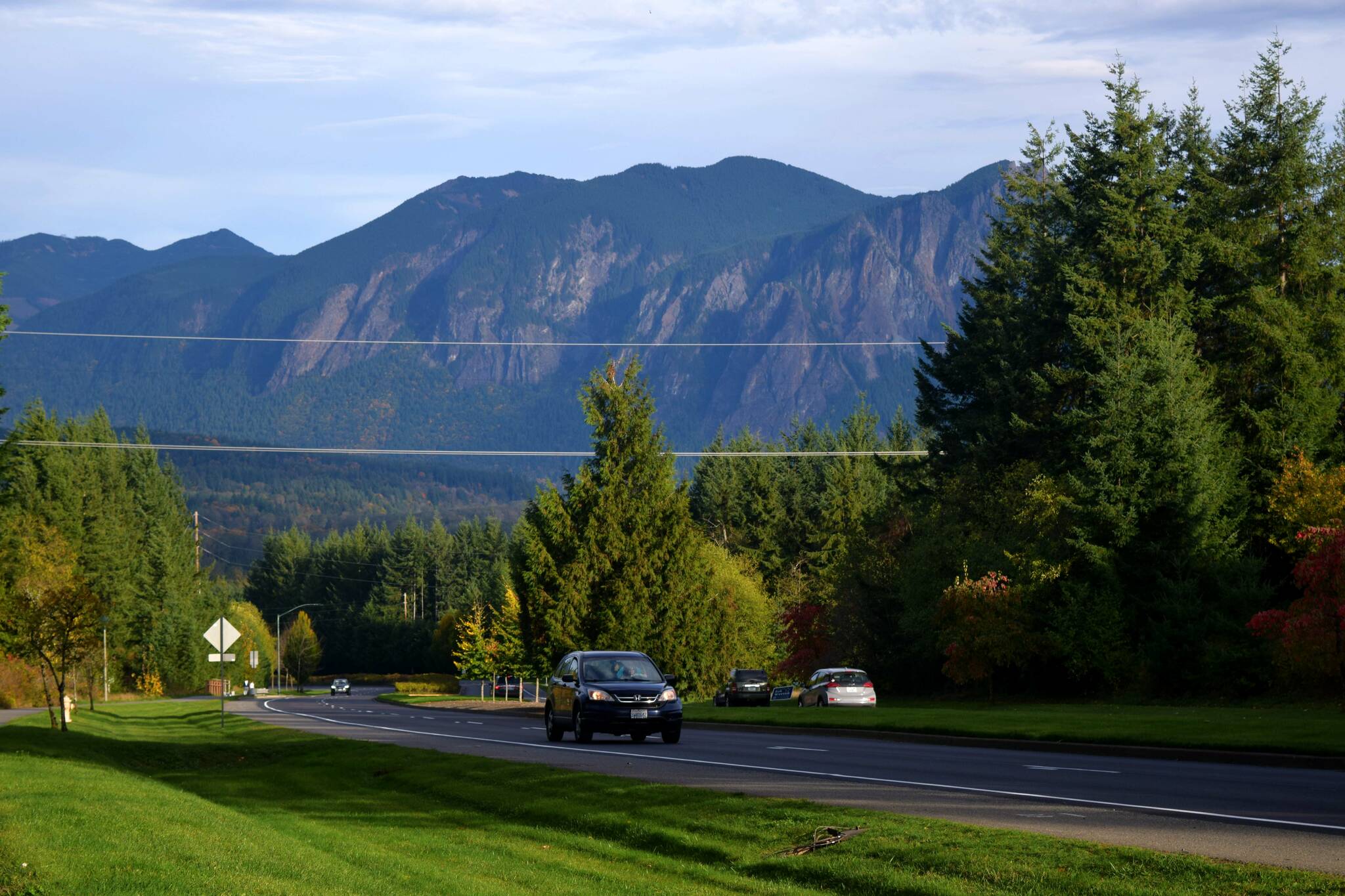Last summer, the city of Snoqualmie went through the laborious and expensive three-month-long process of rehabilitating the damaged Snoqualmie Parkway.
After receiving a $5 million allocation from the state transportation budget, the city was finally able to finish the project it had long been unable to afford – repaving the entire 3.5-mile road that runs from I-90 through Snoqualmie Ridge.
Yet, despite improving the quality of the road in the short-term, officials with the Washington State Department of Transportation say the project does not address a larger deficiency with the parkway’s pavement depth, noting the road was “under-designed” when it was originally built.
“We fully expect that the new pavement will deteriorate in a similar manner and along a similar timeline leading to increase and ongoing maintenance requirements and a premature need for a subsequent pavement preservation project,” Brian Nielsen, a regional administrator for WSDOTs Northwest Region, wrote in a June letter.
“The appropriate remedy to this will require substantially more investment,” he added.
Nielsen’s letter was addressed to Roy Jennings, chair of the Washington State Transportation Commission. The seven-member commission is currently considering a request from the city of Snoqualmie to designate the parkway as a state highway, shifting the roadway’s jurisdiction from the city to WSDOT. The commission is set to vote on that request at its Oct. 18 meeting.
A jurisdictional switch could have significant financial ramifications for the city and state. If the parkway ends up as a state highway, then WSDOT – not the city and its taxpayers – would be on the hook for all future improvements and maintenance.
Snoqualmie officials argue the parkway, due to its proximity to State Route 202, State Route 18 and I-90, functions as a state highway. Much of the road’s damage is the result of pass-through truck traffic that generates no revenue or benefit to the city, they argue, putting city taxpayers on the hook for costly maintenance they did not cause.
“A third of trucks are not associated with business in city limits, which creates significant financial challenges for us,” Snoqualmie Mayor Katherine Ross said earlier this year.
WSDOT officials argue the city’s transfer request is a one-sided effort to release them from their financial responsibilities. They disagree with the city’s claim that most truck traffic doesn’t benefit the city, and have expressed concern with the parkway’s pavement condition.
“The pavement has exhibited signs of deterioration for years, but the city had not seemingly prepared for the necessary pavement preservation work,” Nielsen wrote in his letter.
The city has expressed interest in repaving the parkway, dating back to at least 2017, but said they had been unable to afford the project – originally estimated at over $6 million. That changed in 2022, when state legislators included a $5 million allocation to the city as part of the 2022 state transportation budget.
Using those funds, the Snoqualmie City Council approved a full repaving of the parkway in June. The project came in well under budget at $3.75 million.
Despite the re-pavement, WSDOT officials say the rehabilitation project does not correct the parkway’s larger deficiency of being under-designed. The pavement’s depth, Nielsen wrote in his letter, is less than what WSDOT requires for current and expected traffic loads.
The issue, WSDOT says, is the parkway was designed as a city road, not a state highway. When it was being designed, the parkway used a 20-year design period, below what the state requires for its highways
Amir Ahmadi, a WSDOT materials engineer, said a 20-year period is generally sufficient for a city road, which has a lower daily traffic, but can be problematic for a highway and lead to expensive maintenance issues.
Since the parkway was built, WSDOT says, the state has required a 50-year design period for state highways. The standard leaves highways with thicker pavement compared to a city road. Added depth means the road has to be maintained less often and when maintenance is needed, it is less expensive.
With a 50 year period, most of the pavement failure is what Ahmadi calls “top down,” meaning it has not gone all the way through the asphalt, but only permeated the first few inches of it. That makes it much easier and cheaper to repair.
“That’s what you see with a lot of our roadways,” he said. “We grind the top two inches, and we put two inches on it. We don’t have to get to the lower layers and rebuild the entire roadway because that becomes fairly expensive.”
The parkway has less than 60% of the asphalt depth than a state highway, Ahmadi said, making it more prone to cracks penetrating through the asphalt and giving it a more frequent maintenance cycle.
“My prediction would be on [the parkway], you end up having a lot more cracks going all the way through,” he said. “Then it obviously is going to be more expensive and the maintenance cycle is going to be in shorter intervals.”
In an email, Jeff Hamlin, the city’s interim parks and public works director, said the comparisons being made by WSDOT were “not applicable or fair.” The design standards they reference are for modern-day road construction, he said, and the Snoqualmie Parkway was built before they were enacted.
“As WSDOT knows, Snoqualmie Parkway did not require a re-design of the roadway pavement structure, only re-paving of the worn surface,” Hamlin wrote. “As such, it is not subject to these newer standards.
“[D]uring re-paving this summer it was discovered that the sub-structure of Snoqualmie Parkway was intact – which points to the road being well-designed when it was constructed in 1996.”
Both Ahmadi and Hamlin acknowledge that a redesign of the parkway’s pavement would be infeasible. Adding additional pavement depth is difficult and expensive because it would impact the height of existing infrastructure like sidewalks, gutters and road medians


